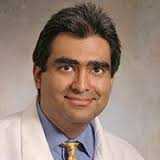17 Apr Process Refines Conversion of Skin Fibroblasts into Cardiac Blood Vessels
MedicalResearch.com Interview with:
Jalees Rehman, MD
Director of Research, Division of Cardiology
Associate Professor of Medicine and Pharmacology
University of Illinois at Chicago
College of Medicine
Chicago, IL 60612
MedicalResearch.com: What is the background for this study?
Response: Converting skin fibroblasts into regenerative blood vessel endothelial cells could be a valuable approach to repair diseased blood vessels in patients with cardiovascular disease and also to build new blood vessels in order to supply engineered tissues and organs.
Using skin fibroblasts is very well suited for personalized therapies because they can be obtained from a skin biopsy in an outpatient setting. The biopsied skin sample is used to extract the skin fibroblasts, which are then expanded in cell culture dishes before they are converted to endothelial cells. This allows for the generation of tens or hundreds of millions of cells that will likely be needed for blood vessel repair and regeneration. By converting skin fibroblasts of a patient, we can generate personalized endothelial cells with the same genetic signature as the patient so that they are less likely to be rejected if implanted back into the same patient after the conversion.
MedicalResearch.com: What are the main findings?
Response: Even though several methods have been described to convert the cells, there was very little known about the precise molecular processes that allow skin fibroblasts to become endothelial cells. Our goal was to understand these molecular processes and pathways. We used a strategy that we call partial de-differentiation in which the mature skin fibroblast is converted to a less mature, intermediate progenitor cell and can then be redirected to a new cell fate.
Our main finding is that converting these fibroblast-derived progenitors activates pathways that are normally active during embryonic development such as the transcription factor SOX17. The conversion process also increased levels of the anti-aging enzyme telomerase. When we forcibly increased SOX17 levels even further, we could increase the conversion from about 10% to roughly 50%.
MedicalResearch.com: What should readers take away from your report?
Response: Understanding the precise molecular pathways that occur during cell lineage conversion allows us to understand how we can enhance regeneration. It also teaches us about why some approaches may be better suited than others. For example, the increase in an anti-aging enzyme with our strategy could be especially useful for skin fibroblasts from older patients.
MedicalResearch.com: What recommendations do you have for future research as a result of this study?
Response: Transcription factors such as SOX17 are important regulators of cell conversion but to assess if this strategy would be useful for human patients, we need to use approaches to convert cells that focus on safety. One of the genes we used to de-differentiate the cells was c-myc, which can activate tumor pathways, and we also used a viral method to introduce these genes that would not be suited for clinical applications. After modifying our method to maximize safety for patients and conducting an initial safety and efficacy study in larger animals, one would have to choose one disease or application requiring repair and regeneration of the vasculature to test it in patients.
MedicalResearch.com: Thank you for your contribution to the MedicalResearch.com community.
Lianghui Zhang, Ankit Jambusaria, Zhigang Hong, Glenn Marsboom, Peter T. Toth, Brittney-Shea Herbert, Asrar B. Malik, Jalees Re
https://doi.org/10.1161/CIRCULATIONAHA.116.025722
Circulation. 2017;CIRCULATIONAHA.116.025722
Originally published April 5, 2017
Note: Content is Not intended as medical advice. Please consult your health care provider regarding your specific medical condition and questions.
More Medical Research Interviews on MedicalResearch.com
[wysija_form id=”5″]
Last Updated on April 17, 2017 by Marie Benz MD FAAD

